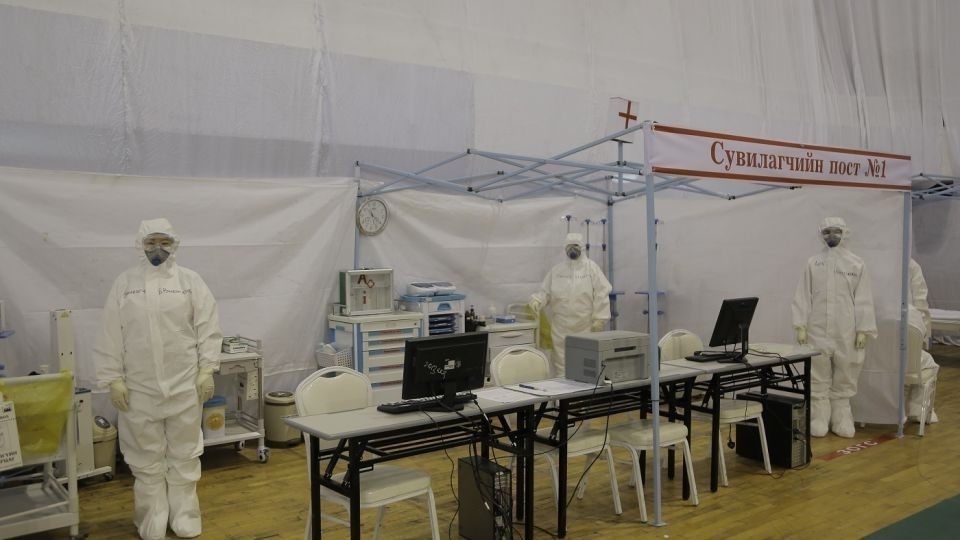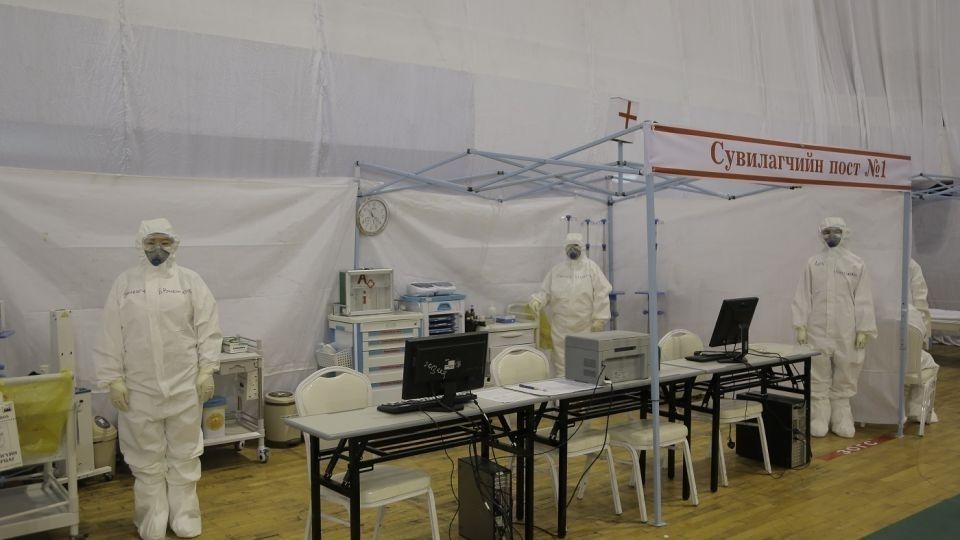The COVID-19 has affected almost all countries and Mongolia is no exclusion. Due to the longest land border and extensive trade relations with China and Russia, Mongolia could be the most obvious hot spot. However, since March 10 to this date, there are 135 confirmed cases which are all imported. So far, no domestic human-to-human transmissions and no deaths. This blog intends to describe the key factors that contributed to the current situation in Mongolia.
Mandatory public measures
Mongolia is one of the first countries that closed its border with China and suspended trades including coal exports. Domestically, all schools and kindergartens were immediately closed. These measures affected the third of the population counting 900,000 children under age of 18.
The Government enforced the Emergency Situation Law in January and approved the Covid-19 Pandemic Response Law in May 2020. These Laws set the legal environment to protect and prevent people from COVID-19 transmission. Accordingly, Mongolia’s biggest Lunar New Year celebration and similar gatherings were cancelled since February 2020. Pubs and night clubs in the capital city opened only to 10 pm and all residents were legally required to wear masks. WHO’s advice and key messages on personal hygiene and individual protective measures such as hand wash and social distancing were broadly promoted through public and social media platforms. In addition, international flights from and to the Republic of Korea, Japan were cancelled by end of February, and Russia and Europe were cancelled in early March. Only a few ad-hoc mission flights performed where their passengers’ body temperatures were checked after landing. All passengers are advised to follow home quarantine with given information pamphlets about Covid-19. Suspected cases with cough and fever or those with a travel history to high risk countries were isolated in a nearby designated hospital. These initial and timely responses, and mandatory public and preventive actions imposing internal movement restrictions, individual protection measures contributed to relatively low confirmed cases in Mongolia since the COVID-19 outbreak.
On the other hand, Mongolia is known as one of the most sparsely populated countries with low population density. However, the situation is rapidly changing in recent decades. Nowadays, almost a half of Mongolia’s 3 million population live in the capital city and the rest live in rural areas. Today, the nomads account for one third of Mongolia’s total population. Eventually, their life style forces them to live in isolated areas that substantially reduces the chances of COVID-19 transmissions within the country.
Health system response
The legacy of Mongolia’s health system developed during the centralised economic management system remains. The country has extensive health infrastructure in terms of hospital beds and health manpower. Both public and private sectors play an important role in the system. Experts often concern with healthcare cost escalation and expenditure burden on all funding sources, as well as efficiency and effectiveness of the entire health system. However, this system did not face serious challenges to follow WHO’s technical guide and protocol on COVID-19 relating to test, trace, detect, treat, isolate and quarantine. Currently, Mongolia spends about 4% of GDP on health and its 3 million population have legal access to personal and public health services. Mandatory health insurance population coverage is near universal, but OOP as a percentage of total health expenditure continues to be around 40%. Despite some issues relating to effective access and quality of health services, adequacy of public financing and financial protection, Mongolia was able to take timely preparatory measures against COVID-19 in partnership collaboration with countries such as Japan and international organizations such as the World Bank and WHO. Through these collaborations Mongolia received new diagnostic tests and personal protective equipment for COVID-19. Country’s testing capacity is increasing towards the target to test 200 people per week among the general population.
In coming few weeks, additionally needed extracorporeal membrane oxygenation and ventilators are expected to arrive in collaboration with ADB. The World Bank agreed to support the first batch of COVID-19 health emergency support operations. The Bank will further support a COVID-19 Emergency Response and Health System Preparedness Project to meet country’s emergency needs in the face of the pandemic and better preparation to possible health crises in the future. This includes a recently approved economic stimulus package and measures aimed to mitigate the economic and social impacts of the COVID-19 in Mongolia with an emphasis on protection of the poor and vulnerable. Mongolia is also learning from other countries to strengthen its preparedness capacity, health security and pandemic response under the International Health Regulations.
There are some challenges that Mongolia faces in these days to implement large scale population testing in settings with fewer resources, trained personnel and equipment. Effective practicing of home isolation, social distancing and tele working are also a challenge due to limited access to digital platforms and communication infrastructure.
Major focus and lessons
Today’s most important focus is to prevent from COVID-19 human-to-human transmission among the population. If this happens, it would directly hit the large number of people with underlying medical conditions, as well as the poor and vulnerable. Currently, one third of the population live under poverty. A recent study show that diabetes and hypertension are the most prevalent disease in Mongolia. The proportion of people with diabetes are increasing and it already has reached to 9 percent of the population. Hypertension and CVD are two main leading causes of morbidity and mortality in Mongolia. TB prevalence is also high with 428 incidences per 100,000 population. Recent studies suggest that active TB or latent TB cases increase the susceptibility of COVID-19 and severity of illness.
COVID-19 likely gives many lessons to Mongolia’s future health system reforms and development. One of them is effective mobilization, allocation, distribution and use of financial and manpower resources. Mongolia needs to reconsider its current practice that is biased towards hospitals at the expense of primary health care, prevention and promotion with weak human resources, inadequate training and continuous education. COVID-19 revealed the level of health education and knowledge about health risks, inappropriate ratio of nurses to doctors, critical shortages of personal protective equipment and personnel in rural areas, neglected working conditions and poor salary incentives. Second, health system strengthening to improve its ability to deliver responsive, continued and quality care starting from the first contact in primary health care facilities to hospitals. This is necessary to ensure safety and protection with better regulation of drug supply, consumption, diagnostic tests, medical examination, service delivery both in the public and private sectors, and effective monitoring, evaluation, and governance.
Third, putting health at the centre of multisector actions. Mongolia is experiencing a much harder time to cope with social-economic consequences of COVID-19 which is go far beyond the health sector. At the same time, health professionals are witnessed how important to work with other sectors such as transport, communication, mass media, industry, police and many others to control and combat with COVID-19.
Fourth, protecting people not only living in Mongolia, but also abroad. There are almost 10,000 Mongolians are stuck abroad and wanting to be repatriated. A recent study among them shows that they are running out money and food as many had not planned to stay abroad for months. Currently, international flights are banned until 31 May with possible further extension. Only specific mission flights are organised to bring Mongolian nationals back home from abroad. Upon return, their tests and treatments are fully funded publicly. But the indirect cost relating to air tickets, accommodation and food during the quarantine period is privately paid by individual families. As mentioned earlier, all COVID-19 confirmed cases are detected mainly from these missions. There are some equity issues for those who cannot afford these payments to travel back home. Recently, it has become a political issue because of the expected parliamentary election on 24 June 2020.
Finally, Mongolia’s lessons suggest that each country needs different approaches suited to own country circumstances. In case of Mongolia, the timely, mandatory measures, health system response capacity and multisector partnership collaboration at national and international levels largely contributed to the situation that the country has so far. Further, it is critically important to learn from own lessons, recognize and understand newly emerging needs, risks, weaknesses and shortfalls. It will help evaluate response measures taken and plan for future continued actions in order to reduce the risk of transmission at the lowest possible level regardless of any change in politics and the government after the incoming parliamentary election.
Acknowledgement:
The author sincerely wishes to thank Dr Dorjsuren Bayarsaikhan for his support and inputs provided into this blog.



